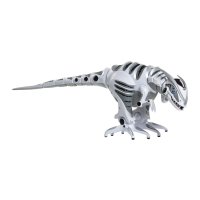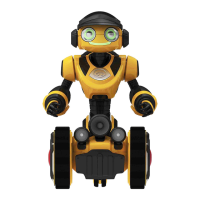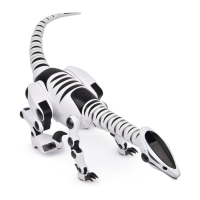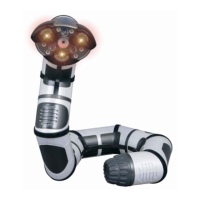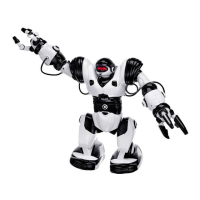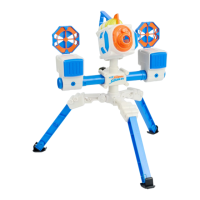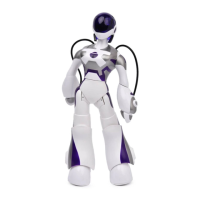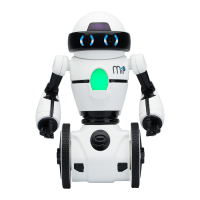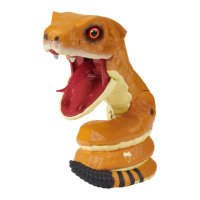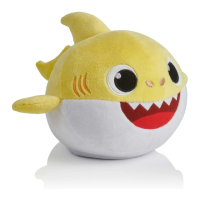Do you have a question about the WowWee ROBORAPTOR 8095 and is the answer not in the manual?
Identifies key sensors including vision, sound, and touch, plus the battery compartment.
Details the physical components and their locations on the Roboraptor model.
Explains controls for movement (forward, backward, turns) and mood selection.
Details buttons for special actions like Bite/Guard Mode and Demo/Roam.
Specifies battery types required for the Roboraptor and controller and guides installation.
Provides critical warnings and advice on battery usage, mixing, charging, and disposal.
Details how to make the Roboraptor walk, run, move backward, and turn using the controller.
Explains how to control the Roboraptor's head and tail movements, including specific moods.
Describes commands for stopping, biting, and initiating demo sequences.
Explains how the Roboraptor explores autonomously and enters a defensive guard mode.
Details how to switch between Hunting, Playful, and Cautious moods to alter behavior.
Describes how the Roboraptor reacts to touch on its tail, chin, and mouth based on its mood.
Explains how sound and vision sensors influence reactions in different moods.
Describes how the Roboraptor uses vision sensors to detect and avoid obstacles.
Provides guidance on suitable surfaces and how lighting affects sensor performance.
Advises on controller positioning and general sensitivity to sound, vision, and touch.
| Manufacturer | WowWee |
|---|---|
| Category | Toy |
| Type | Robotic Dinosaur |
| Power Source | Battery |
| Recommended Age | 8 years and up |
| Product Name | ROBORAPTOR |
| Control Method | Remote Control |
| Remote Control | Yes |
| Material | Plastic |
